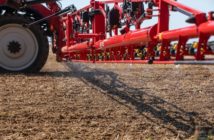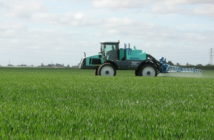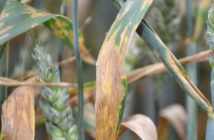A prototype crop disease warning system that can warn of disease up to four weeks before symptoms are seen – earlier than any other system currently available – has been revealed by the University of Hertfordshire’s MEMS Group.
This latest bio detection system, showcased at the leading technical event for the UK arable industry – Cereals 2016 – consists of an integrated high volume air sampler, fluidic sample processing delivery system and on-board molecular diagnostics.
Dr. Daniel McCluskey, Senior Research Fellow, Enterprise & Business Development at the University of Hertfordshire, commented: “With a seven-day autonomous pathogen detection operation, our system conducts sensitive, specific analyses and reports them via terrestrial mobile or satellite data connection. We envisage that this data will feed into the CropMonitor forecast models to identify emerging threats. This would therefore enable farmers and agronomists to make more informed, ‘smart’ spraying decisions that both enhance food security and reduce the use of environmental fungicide”.
The University’s prototype crop disease warning system has been developed over the past 18 months, as part of a three year joint BBSRC (Biotechnology and Biological Sciences Research Council) and Innovate UK funded consortium project. Working closely with its consortium partners – Optisense Ltd, FERA Science Ltd and Bayer Cropscience – the University of Hertfordshire MEMS Group has applied its expertise in researching advanced integrated biodefence systems to develop a viable technology platform for the food security industry.
The prototype design has undergone extensive laboratory testing and is now ready to be deployed for field trials, with FERA and Bayer overseeing the next phase of the project. The development of the commercial device will be undertaken by Optisense and is due to commence in parallel with the next stage of field trials.



